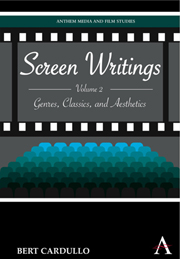Book contents
- Frontmatter
- Contents
- List of Illustrations
- Introduction: The Film of Value
- Part I Film Genres, Film Classics, and Film Aesthetics
- 1 Shooting the City: The Gangster, Manhattanites, and the Movies
- 2 Back to the Future, or the Vanguard Meets the Rearguard
- 3 Flags and Letters, Men and War
- 4 Farce, Dreams, and Desire: Some Like It Hot Re-viewed
- Interlude
- Part II Classification, Re-classification, and Assessment
- Bibliography of Related Criticism
- Index
- Plate section
1 - Shooting the City: The Gangster, Manhattanites, and the Movies
from Part I - Film Genres, Film Classics, and Film Aesthetics
Published online by Cambridge University Press: 05 March 2012
- Frontmatter
- Contents
- List of Illustrations
- Introduction: The Film of Value
- Part I Film Genres, Film Classics, and Film Aesthetics
- 1 Shooting the City: The Gangster, Manhattanites, and the Movies
- 2 Back to the Future, or the Vanguard Meets the Rearguard
- 3 Flags and Letters, Men and War
- 4 Farce, Dreams, and Desire: Some Like It Hot Re-viewed
- Interlude
- Part II Classification, Re-classification, and Assessment
- Bibliography of Related Criticism
- Index
- Plate section
Summary
The archetypal creature of the city is the movie gangster, whom Robert Warshow described over sixty years ago as a tragic hero. “Thrown into the crowd without background or advantages, with only … ambiguous skills,” Warshow wrote, “the gangster is required to make his own way, to make his life and impose it on others.” Frustrated by the facelessness of the individual in the big city, he sees crime as the rational way to establish his identity. Yet there is a tragic flaw in this ambition to rise above the crowd, for the successful racketeer increasingly becomes the target of both the police and his fellow criminals. The greater his success, the more precipitous his fall; in the end, “there is only one possibility – failure.” The final meaning of the city for the gangster, according to Warshow, thus can only be “anonymity and death.”
But Warshow understood that, like Greek tragedies, gangster films were not realistic works of art – they were mythological ones. And this means that, from an artistic point of view, the city, like the ancient Greek stage, is a metaphorical space and not a real one, even when gangster films are shot on location in actual cities like New York. So, for Warshow, the gangster inhabits the
dangerous and sad city of the imagination, which is so much more important, which is the modern world. And the gangster – though there are real gangsters – is also, and primarily, a creature of the imagination.
- Type
- Chapter
- Information
- Screen WritingsGenres, Classics, and Aesthetics, pp. 3 - 22Publisher: Anthem PressPrint publication year: 2010



